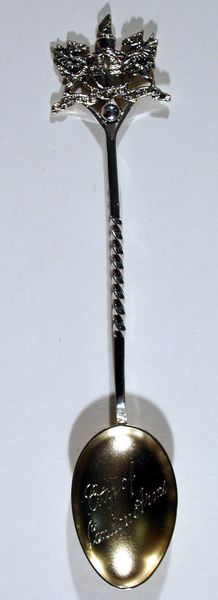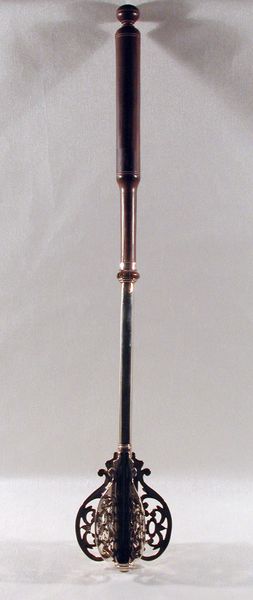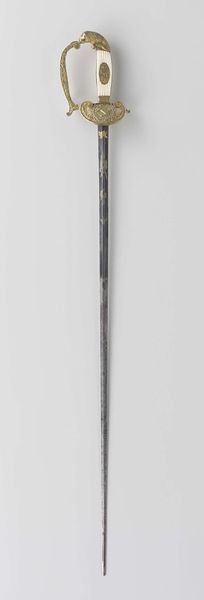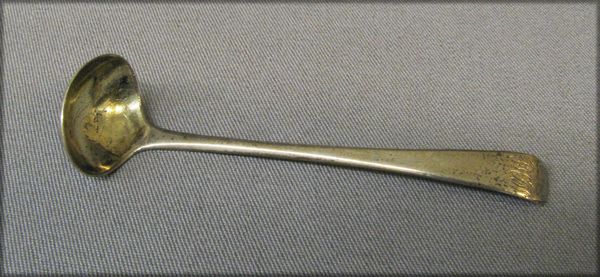
Souvenir spoon with finial in form of Tower of London 1895 - 1896
0:00
0:00
silver, metal, sculpture
#
silver
#
metal
#
sculpture
#
figuration
#
sculpture
#
decorative-art
Dimensions: Length: 4 3/4 in. (12.1 cm)
Copyright: Public Domain
Editor: Here we have a silver souvenir spoon dating from 1895-96, created by Saunders & Shepherd. The finial is shaped like the Tower of London. I’m struck by the odd juxtaposition of a grand, historical monument on something so everyday, so domestic. What does this pairing suggest to you? Curator: It speaks volumes about the popularization of history and national identity in the late 19th century. The Tower of London wasn't just a monument; it was a symbol deployed to represent the grandeur of the British Empire. Manufacturing souvenir spoons en masse made cultural landmarks available to a wider public. Did such souvenirs help construct and reinforce a shared national narrative? Editor: That makes a lot of sense. It's like buying a little piece of the national story. A user can eat desert and have the Tower of London too. But wasn’t the Tower also a prison, a site of execution? Isn't there a tension between glorifying history and confronting its darker aspects? Curator: Exactly! And the fact that it's on a *spoon* minimizes those darker histories, reduces a powerful symbol into a digestible commodity. It serves to soften historical complexity and offer a palatable version of British history and, frankly, power, that the masses could literally consume. Editor: So, the spoon is more than just a pretty trinket. Curator: Indeed. It tells us about how powerful entities, museums, artists, and the general public have selected which version of its cultural heritage to project both internally, but especially outwards to the international stage. It hints at the politics embedded in seemingly simple objects, how identity is forged, marketed, and consumed. Editor: I hadn’t considered the politics of souvenirs before! This has really given me a new way to think about how everyday objects interact with historical narratives. Curator: It’s amazing what narratives even the smallest piece of metal, displayed in a museum or at home, can uncover.
Comments
No comments
Be the first to comment and join the conversation on the ultimate creative platform.













